Under the sea: A squid album
Future of Jumbo Squid Questioned
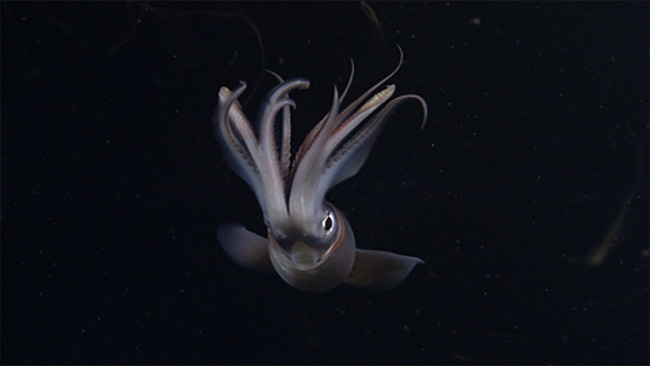
Humboldt Squid (Dosidicus gigas) photographed by Monterey Bay Aquarium Research Institution’s remotely operated vehicle Tiburon at a depth of about 300 meters over Davidson Seamount, off the Central California coast.
Colorful Carpet of Cool Sea Creatures Discovered 2 Miles Deep
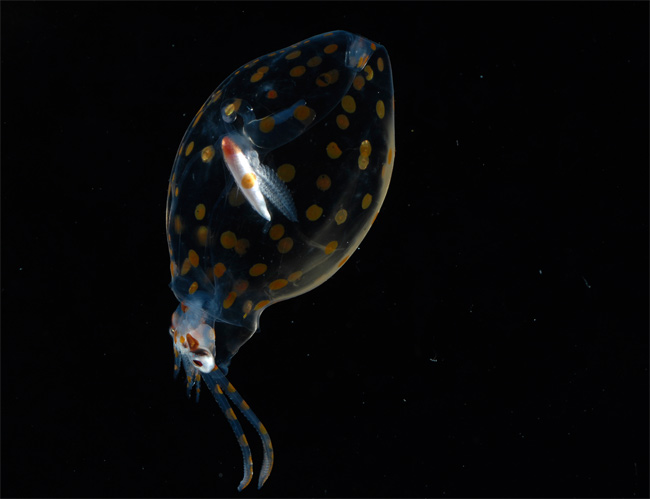
Digital cameras also captured an image of this juvenile crachiid squid, also called glass squid due to its transparent body.
Longfin Squid
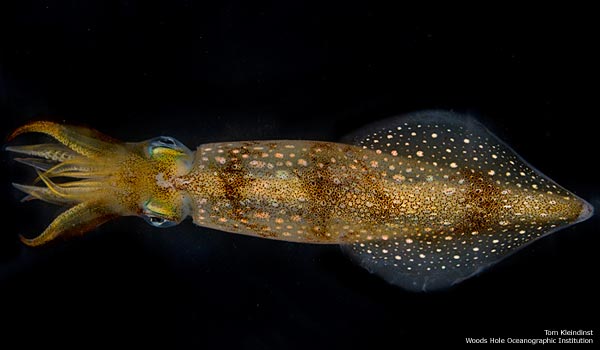
In a study published in 2010 in the The Journal of Experimental Biology, researchers confirmed that longfin squid (Loligo pealeii), which are also a popular seafood meal, can indeed detect sound at low frequencies. Now, the researchers are working to better understand how this hearing mechanism works. [Read full story]
How Whales Attack Squid: Mystery Deepens
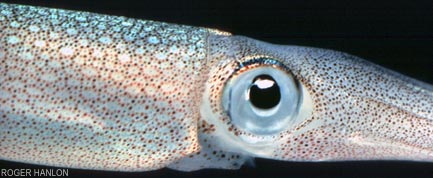
A long-finned squid.
Colossal Squid Is No Monster, Study Finds
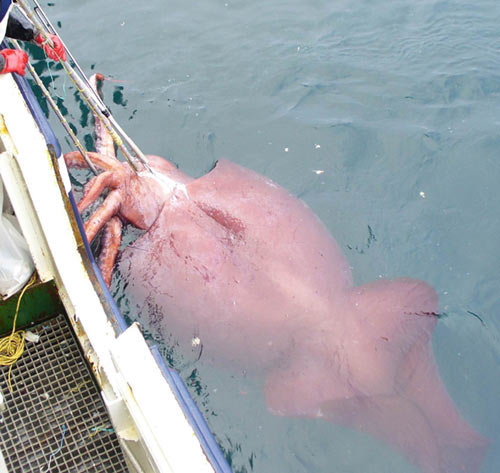
The crew of the New Zealand vessel San Aspiring worked to bring aboard the colossal squid they found in the Ross Sea. The squid was barely alive when it reached the surface and observers and crew thought it would be very unlikely to survive if released.
Arrow Squid
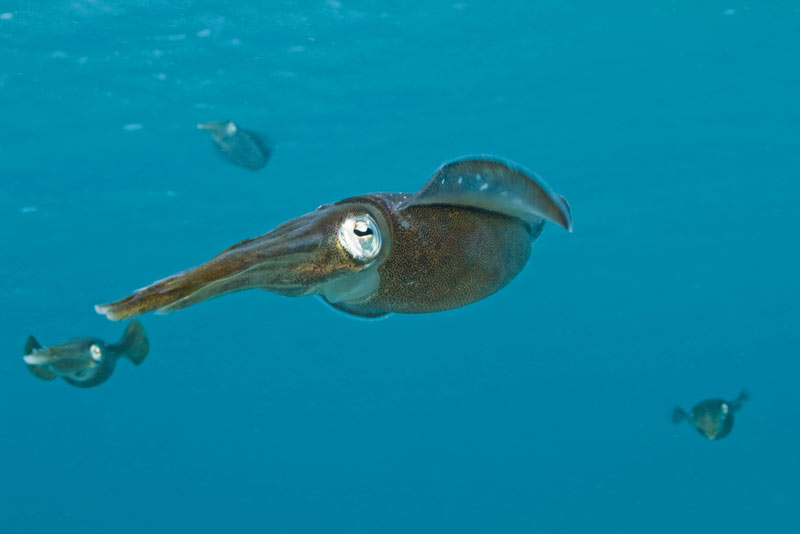
Arrow squid like this one have smooth cylindrical bodies and short, pointed tail fins. There are two species of arrow squid, with both looking similar, according to the Deepwater Group Ltd.
Dedicated Mama
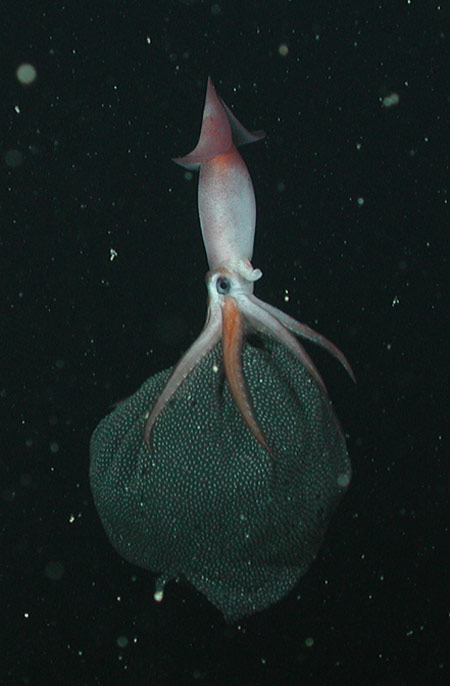
If you think gestating one baby is tough, try 3,000. The squid Gonatus onyx carries around her brood of 2,000 to 3,000 eggs for up to nine months. The squid moms have their arms full: While carrying their eggs, they're stuck swimming with their fins and mantle instead of their much more effective arms.
So why would G. onyx take such care of its thousands of offspring? According to a 2005 study published in the journal Nature, the squid carry their eggs to deep water, where predators are rare. The deep-sea offspring are also larger and more capable of survival than shallow water squid -- thanks, mom!
Sign up for the Live Science daily newsletter now
Get the world’s most fascinating discoveries delivered straight to your inbox.
Lone Squid
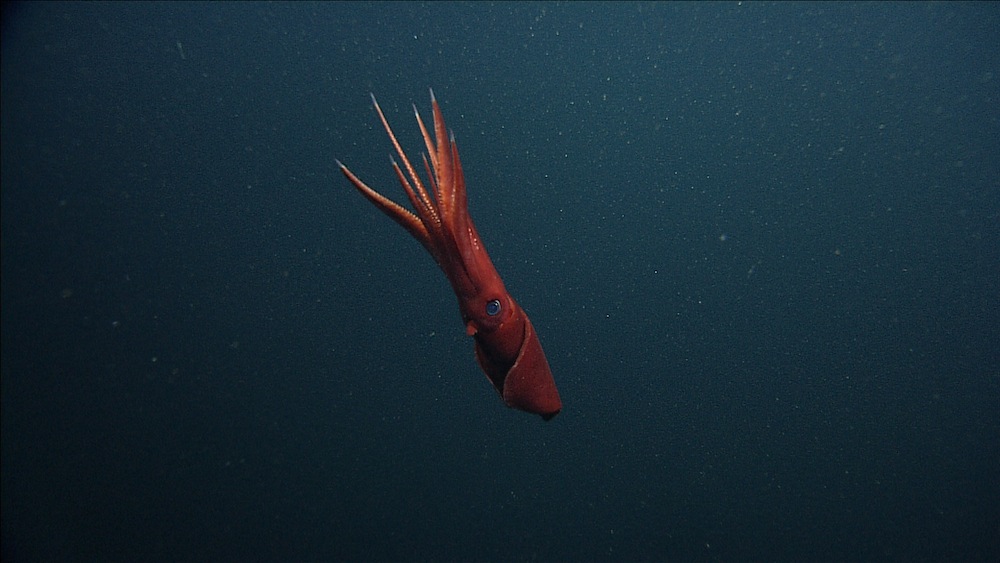
A female Octopoteuthis deletron in the water column observed by MBARI’s remotely operated vehicle Ventana on December 6th 2007. The photophores on the arm tips are visible. This animal was observed at 854 meters depth in Monterey Canyon. Spermatangia were present on the dorsal arms. They are visible as white dots.
Vampire Squid
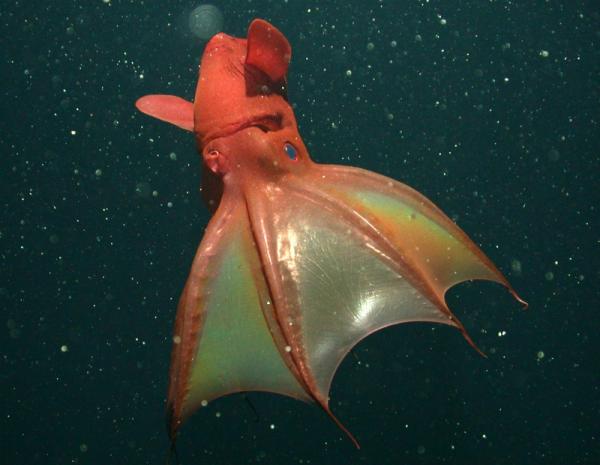
Despite its terrifying name, the vampire squid is relatively tiny, reaching a maximum of 6 inches (15.4 cm) in length. It gets its name from its red coloring, glowing, bioluminescent eyes and the cloak-like webbing that connects its eight arms. Although it has similarities with both squid and octopuses, it is actually not a squid but in its own separate family, of which it is the last remaining member; as such, the animal is referred to as a "living fossil." Its scientific name, Vampyroteuthis infernalis, literally translates to "vampire squid from hell." Yikes.
Klingon Cloaked Squid
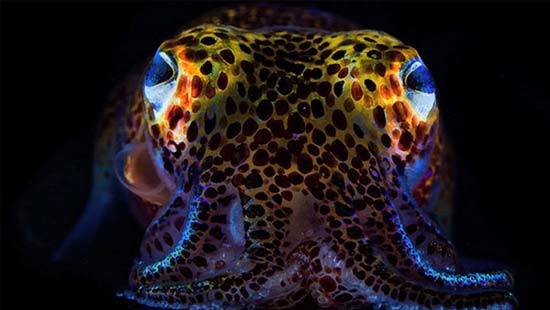
The Hawaiian bobtail squid and its resident bacterium have a powerful and still somewhat mysterious symbiotic relationship. The luminescent bacteria populate a small pouch on the squid's underside and pouch on the squid's underside and provide a sort of "Klingon cloaking device."
First Videos of Deep-Sea Squid Reveal Aggressive Predator
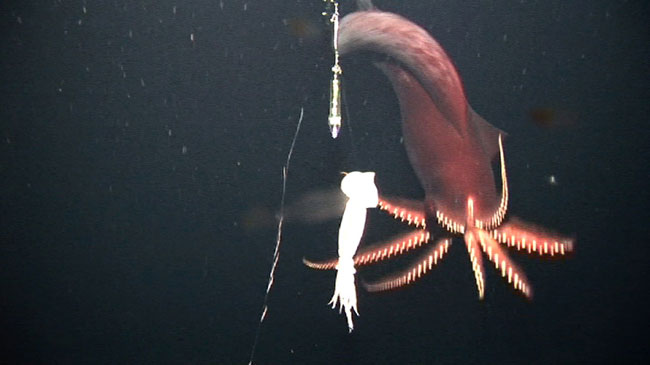
The deep-sea eight-armed squid Taningia danae, the world's largest bioluminescent or light emitting creature, as it swims through the dark seas.










